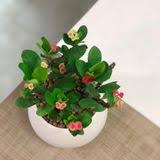Frequently Asked Questions About Blue Willow China: A Complete Guide

Blue Willow China, with its elegant and timeless blue-and-white design, is one of the most iconic patterns in the world of ceramics. It has captured the hearts of collectors, historians, and design enthusiasts for centuries. Whether you’re new to collecting Blue Willow China or you’re an experienced enthusiast, there are a number of questions that frequently arise about this beloved design. In this article, we’ll address some of the most commonly asked questions about Blue Willow China, offering insight into its history, care, collecting tips, and much more.
1. What Is Blue Willow China?
Blue Willow China refers to a distinctive blue-and-white ceramic pattern that typically features scenic depictions of pagodas, willow trees, bridges, and birds, often set against a backdrop of lush landscapes. The design is primarily seen on dinnerware, but it has been adapted to various other products such as teapots, cups, and vases. The name “Blue Willow” is a reference to the prominent willow tree depicted in the pattern, which symbolizes peace and tranquility in Chinese culture.
The origins of Blue Willow China are widely debated, but it is most commonly attributed to British potters in the late 18th century, inspired by Chinese porcelain designs and the fascination with the East during the period of European colonialism. The pattern gained immense popularity in the 19th century and continues to be cherished by collectors and decorators today.
2. How Can I Identify Blue Willow China?
Identifying Blue Willow China can sometimes be tricky due to the numerous manufacturers that have produced pieces with the same design. However, several key elements can help you recognize authentic Blue Willow China:
- Design Elements: Blue Willow China typically features the signature elements of a traditional design: a bridge, a willow tree, a pagoda, and birds. These elements are often set in a circular or rectangular frame. The scenes depicted often tell a romantic or mythical story.
- Blue and White Color Scheme: As the name suggests, Blue Willow China is characterized by its blue-and-white color scheme. The blue is often a rich, deep cobalt blue, and the white is a bright, clean background.
- Manufacturer’s Marks: Many Blue Willow pieces are marked with the manufacturer’s logo or stamp. Common marks include “Made in England,” “Japan,” or “China,” depending on where the pieces were produced. Some manufacturers also include a specific logo or pattern name.
- Shape and Size: Pieces such as plates, teapots, bowls, and cups are common in Blue Willow China sets. The shapes can vary, but the design itself remains relatively consistent.
If you are unsure whether a piece is authentic, consider seeking guidance from an expert or using online resources to compare markings and designs.
3. How Did Blue Willow China Originate?
The exact origins of Blue Willow China remain somewhat shrouded in mystery, with various theories about its creation. The most popular story is that the design was inspired by traditional Chinese porcelain designs but was produced by British potters in the late 18th century. Some sources suggest that the original design was created by English potter Thomas Minton in 1790, although it is often credited to other makers such as Spode and Wedgwood.
One popular legend surrounding the Blue Willow pattern tells the story of a beautiful Chinese princess and her lover, who escape to a secret life together. However, they are tragically discovered, and the pair is turned into two birds, which are often depicted flying over the bridge in the pattern.
The Blue Willow design was part of a wider trend in Europe for “Oriental” designs and motifs, driven by the fascination with the Far East during the 18th and 19th centuries. The rise of the British Empire and its trade with China made Chinese porcelain highly desirable in Europe, and Blue Willow China became a European reinterpretation of these exotic designs.
4. Why Is Blue Willow China So Popular?
Blue Willow China has remained popular for several reasons:
- Timeless Design: The intricate, yet balanced design featuring nature and architecture, is both serene and captivating. It has a universal appeal that fits with a variety of decorating styles.
- Historical Significance: Blue Willow China evokes a sense of history and nostalgia, making it a meaningful addition to any collection. Many collectors enjoy the opportunity to connect with a piece of history.
- Versatility: Blue Willow China is not just for collectors. It’s widely used in dining settings, often for special occasions or as a part of everyday dinnerware. Its classic design can complement both traditional and modern interiors.
- Collectible Value: Many pieces of Blue Willow China are highly collectible, with certain manufacturers, patterns, and pieces holding significant value. The rarity of some items adds to their appeal as valuable antiques.
5. How Can I Care for My Blue Willow China?
Proper care is essential for maintaining the beauty and integrity of Blue Willow China, especially if the pieces are antique. Here are some tips on how to care for your Blue Willow China:
- Washing: Always hand wash your Blue Willow China with warm water and mild detergent. Avoid using abrasive scrubbing pads, as these can damage the delicate glaze. Some newer Blue Willow pieces may be dishwasher-safe, but it’s always best to err on the side of caution and hand wash antiques.
- Storage: To prevent chips and cracks, store your Blue Willow China in a safe place. Use soft cloths or bubble wrap when storing individual pieces to protect them. If you display your Blue Willow China, ensure it is out of reach of children or pets.
- Avoiding Discoloration: While Blue Willow China is durable, it can discolor over time if exposed to direct sunlight or certain chemicals. Avoid leaving pieces in direct sunlight for prolonged periods to preserve their colors.
- Repairing Damage: If your Blue Willow China becomes chipped or cracked, consider having it professionally repaired to maintain its value. Many antique restorers specialize in ceramic repairs.
6. Can Blue Willow China Be Used in Modern Day Settings?
Yes, Blue Willow China is still widely used today. Whether you are hosting a formal dinner or enjoying an afternoon tea, Blue Willow China adds a touch of elegance and tradition to any setting. While its classic design is rooted in history, Blue Willow can easily be incorporated into modern-day table settings. Many contemporary designers incorporate Blue Willow China into minimalist, modern interior design, creating a fusion of old and new.
Blue Willow China is also used in many non-traditional ways. It makes for excellent decorative pieces in the form of vases, decorative plates, and bowls. Many collectors also display their Blue Willow collections as art in their homes. The versatility of the design ensures it remains relevant in both modern and traditional settings.
7. What Are Some Common Variations of Blue Willow China?
While the general design of Blue Willow China remains largely the same, several manufacturers have created their own versions of the pattern. These variations can differ in terms of:
- Design Detailing: Some manufacturers may alter the composition of the design, changing the placement of certain elements, or introducing additional features such as more detailed birds or different foliage.
- Manufacturing Techniques: Different potters used different techniques in creating Blue Willow China, from hand-painting to transfer printing. These differences can affect the overall look and feel of the pieces.
- Marks and Signatures: The maker’s mark, often located on the bottom of the piece, can be different depending on the manufacturer, allowing collectors to identify which company made the piece and when it was made.
Some of the most famous manufacturers of Blue Willow China include Spode, Wedgwood, and Johnson Brothers, each of which has contributed unique versions of the pattern over time.
8. Where Can I Buy Blue Willow China?
Blue Willow China can be found in a variety of places:
- Antique Stores: Antique shops, especially those specializing in ceramics and collectibles, are excellent sources for finding vintage or rare Blue Willow China pieces.
- Online Marketplaces: Websites like eBay, Etsy, and other auction sites often have a wide range of Blue Willow China for sale, from vintage to newer pieces.
- Specialty Stores: Certain stores and brands specialize in fine china and collectibles, including Blue Willow patterns. These stores often carry new, high-quality pieces.
Before making a purchase, it’s important to research the authenticity of the piece, especially if it’s vintage or antique. Look for reputable sellers with good reviews and provide as much detail as possible when purchasing online.
9. Conclusion
Blue Willow China remains a beloved and iconic design that appeals to collectors, decorators, and history enthusiasts alike. With its rich history, timeless beauty, and wide variety of uses, it’s no surprise that Blue Willow China has stood the test of time. Whether you’re collecting rare pieces, looking to incorporate it into your modern-day decor, or simply admiring its artistic value, Blue Willow China continues to hold a special place in the world of ceramics.
By understanding its origins, care tips, and the market trends surrounding Blue Willow China, enthusiasts can fully appreciate this enduring and elegant design.

